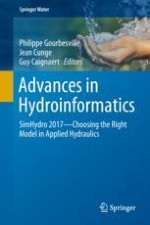2018 | OriginalPaper | Chapter
Dam Break Simulation Using DHI-MIKE21 in the Eg Hydropower Plant, Mongolia
Authors : Janrai Soninbayar, Philippe Audra
Published in: Advances in Hydroinformatics
Publisher: Springer Singapore
Activate our intelligent search to find suitable subject content or patents.
Select sections of text to find matching patents with Artificial Intelligence. powered by
Select sections of text to find additional relevant content using AI-assisted search. powered by
